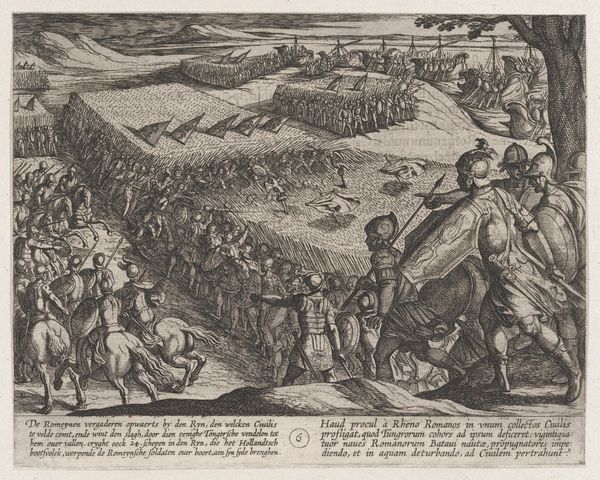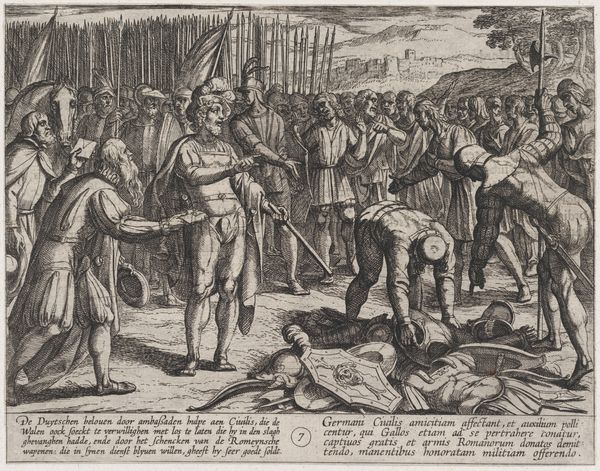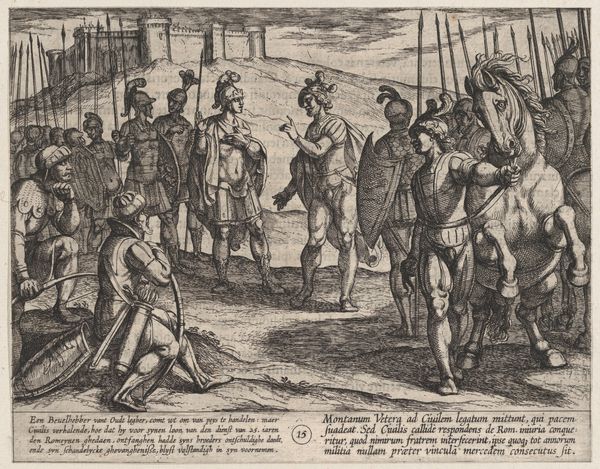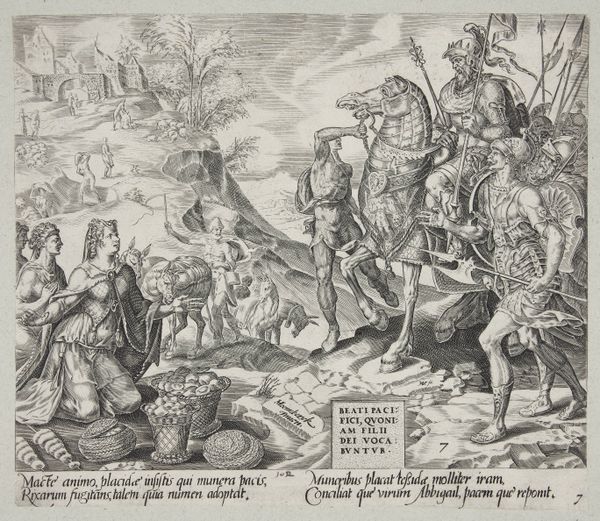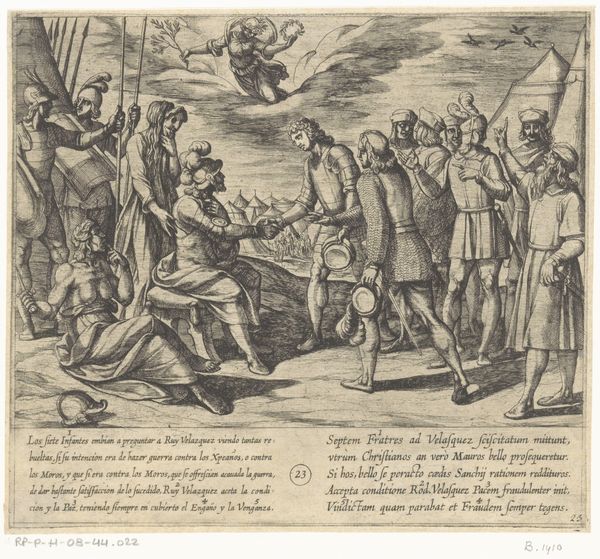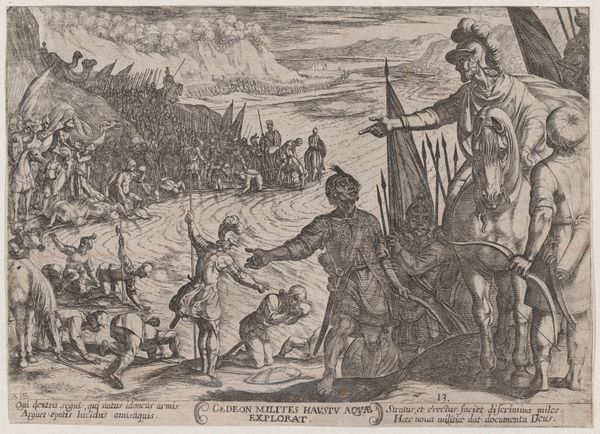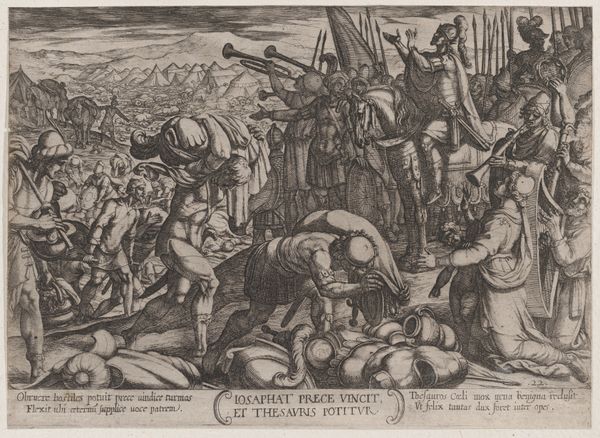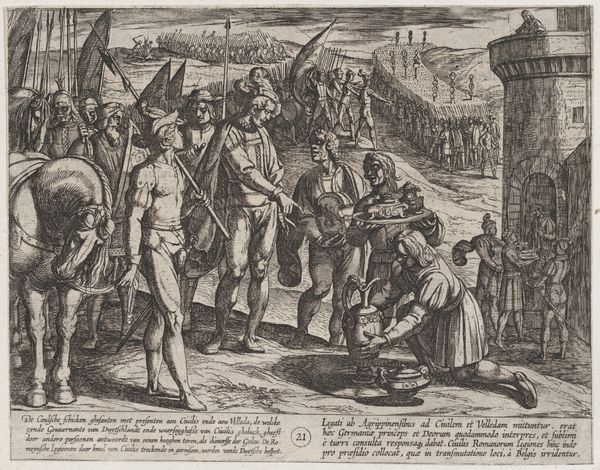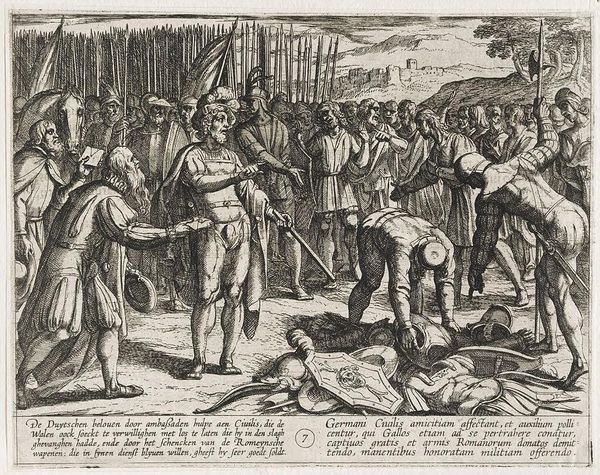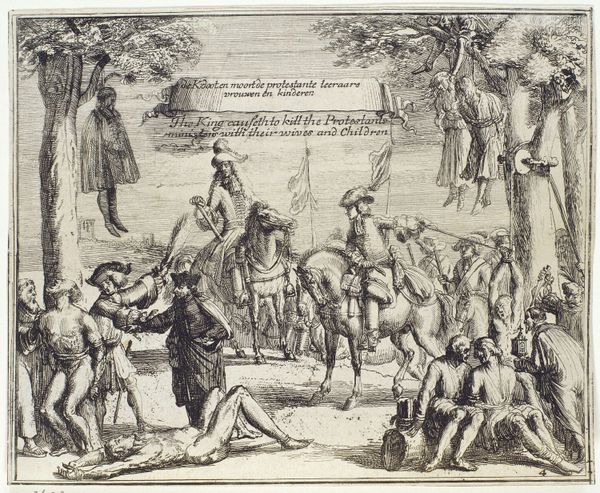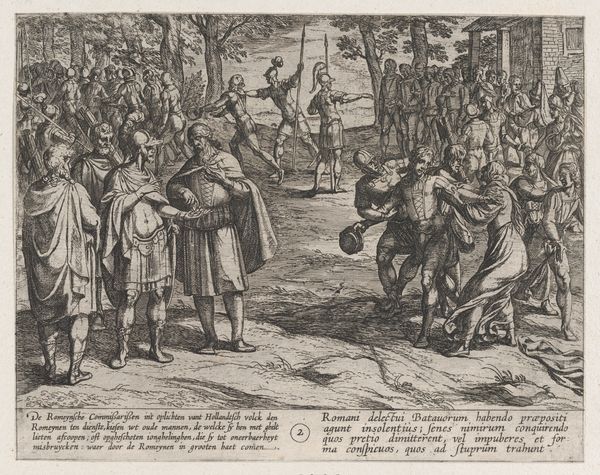
Plate 3: Claudius Civilis Arrested and his Brother Paulus Beheaded, from The War of the Romans Against the Batavians (Romanorvm et Batavorvm societas) 1611 - 1612
0:00
0:00
drawing, print, etching
#
drawing
#
narrative-art
#
baroque
# print
#
etching
#
war
#
men
#
pen work
#
history-painting
Dimensions: Sheet: 6 1/2 × 8 1/4 in. (16.5 × 21 cm)
Copyright: Public Domain
Editor: This print, made by Antonio Tempesta between 1611 and 1612, is called "Plate 3: Claudius Civilis Arrested and his Brother Paulus Beheaded, from The War of the Romans Against the Batavians." It's incredibly graphic, showing a beheading in detail. The composition is packed with figures. What strikes you about how it speaks to its historical context? Curator: This work speaks volumes about the visual strategies used to represent power dynamics and rebellion. Think about the 'War of the Romans Against the Batavians.' It was a significant uprising in what is now the Netherlands. Tempesta, working much later, isn’t just illustrating history; he's participating in a dialogue about Dutch identity and resistance against imperial power, then and now. Editor: So the image is more than just a depiction of an event. It’s also participating in shaping collective memory? Curator: Precisely. How do you think Tempesta's decision to depict the beheading so explicitly factors into the piece's political message? Was he valorizing the Batavian cause, or was he more invested in sensationalism? Consider, also, the power of printmaking itself: it democratizes the image, allowing for wider dissemination of particular narratives. Editor: That's a good point. The image can be distributed to shape opinion about the war. Do you think the fact that it's a print, and therefore reproducible, impacts its effectiveness as a statement? Curator: Absolutely. Think about the role prints played in shaping public opinion during periods of conflict and political upheaval. Images like this were potent tools. Also, note the framing. While visually the work presents an historical event, conceptually, it invites conversations about freedom, Dutch history, resistance, colonialism and national pride, thus reflecting various socio-political perspectives. Editor: Wow, it’s amazing how much context can be packed into one image. I see how museums play an important part in all this. Thanks! Curator: And I trust you have now some idea about how politics and art can sometimes have their own way of intertwining in various contexts.
Comments
No comments
Be the first to comment and join the conversation on the ultimate creative platform.



